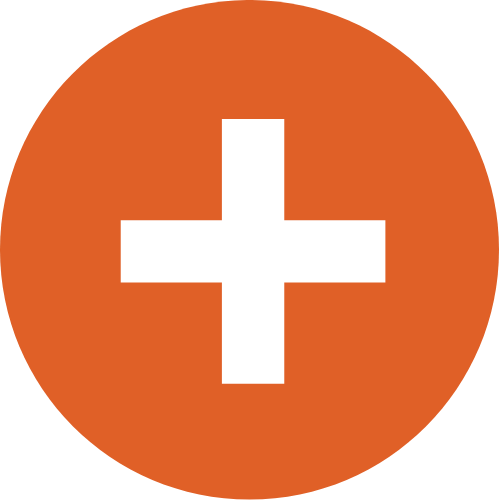
Butler Medical Providers View Company Profile
***** $20,000 Sign-on Bonus ***** A Certified Registered Nurse Anesthetist (CRNA) is an advanced practice registered nurse (APRN) who practices both autonomously and in collaboration with a variety of health providers on the interprofessional team to deliver high-quality, holistic, evidence-based anesthesia and pain care services. The CRNA cares for patients at all acuity levels across the lifespan in a variety of settings for procedures including, but not limited to, surgical, obstetrical, diagnostic, therapeutic, and pain management. Education Minimum: Graduate of a Nurse Anesthesia Educational Program accredited by the Council on Accreditation of Nurse Anesthesia Educational Programs or its predecessor Preferred: N/A Registration/Certification/Licensure: Current PA RN license, Certified by the National Board of Certification and Recertification for Nurse Anesthetists. Individual must meet the credentialing requirements of the Medical Staff Office. Healthcare Provider CPR, ACLS, Act 33/73 Clearances Experience Minimum: None Preferred: None Other Requirements: N/A Status: Non-exempt Physical Requirements: The following frequency definitions apply to all Physical Requirements unless otherwise noted: Occasional: (0-1/3 of day , 0 – 2.5 hrs/day, 1 – 4 reps/hr) Frequent: (1/3 -2/3 of day , 2.5 – 5.5 hrs/day, 5 -24 reps/hr) Constant: (> 2/3rd of day , > 5.5 hrs/day, > 24 reps/hr) NOTE: An asterisk (*) indicates that the item is an essential function. Non-Material Handling Standing – Remaining on one’s feet in an upright position remaining stationary – FREQUENT Walking – Remaining upright on one’s feet, and moving about – FREQUENT Sitting – Body remains in a seated position – OCCASIONAL Stooping – To bend the body downward and forward by bending the spine at the waist – OCCASIONAL Bending – To flex the upper body forward – OCCASIONAL Twisting – To rotate the upper body forward – OCCASIONAL Climbing – To move the body in any direction on equipment or structures that do not include stairs or ladders – OCCASIONAL Ladders – To ascend and descend ladders – N/A Stairs – To ascend and descend stairs – OCCASIONAL Kneeling – To move the body downwards and come to rest on both hands and both knees – OCCASIONAL Squatting – To move the body downwards by bending both knees – OCCASIONAL Crouching – To bend the body forward and downward by bending the spine and the legs – OCCASIONAL Crawling – To move the body forward or backwards on hands and knees – N/A Reaching Horizontal – To extend the arms and hands outward, remaining under shoulder height – FREQUENT Reaching Overhead – To extend the arms and hands up and out over shoulder height – OCCASIONAL Grasping – Using functional gripping of the hand to handle an object – FREQUENT Finger Manipulation – To manipulate objects with the use of fingers – FREQUENT Seeing – Using visual feedback to accomplish a task or activity – CONSTANT Hearing – Using sound feedback to accomplish a task or activity – CONSTANT Repetitive Upper Extremity Use – Using the arms and/or hands continuously or more than 2/3 of the total time – N/A Repetitive Lower Extremity Use – Using the legs and/or feet continuously or more than 2/3 of the total time – N/A Material Handling Pushing – To exert a force upon an object in order to move it in a certain direction Pushing refers to moving an object away from the person OCCASIONAL 50# – > 100# Pulling – To exert a force upon an object in order to move it in a certain direction Pulling refers to moving an object towards the person OCCASIONAL 50# – > 100# Lift – Floor to Waist OCCASIONAL 20# – 50# Lift – Waist to shoulder OCCASIONAL Up to 20# Lift – Shoulder to overhead OCCASIONAL Up to 20# Carrying – To transport an object or article using the arms or hands (> 10 feet) OCCASIONAL Up to 20# Environmental Factors Working alone – OCCASIONAL Working in cramped quarters – N/A Constant interruptions – FREQUENT Working with hands in water – OCCASIONAL Use of power tools – OCCASIONAL Working on ladders/scaffolding – N/A Exposure to vibration – N/A Exposure to dust – OCCASIONAL Exposure to noise (constant) – N/A Exposure to electrical energy (outlets, etc) – OCCASIONAL Exposure to temperature changes (heat, cold, humidity), that require special clothing – N/A Exposure to slippery walking surfaces – OCCASIONAL Exposure to solvents, grease, oils – OCCASIONAL Exposure to radiant energy, ie computer terminal (more than 4 hours per shift) – OCCASIONAL Working with bloodborne pathogens – CONSTANT Cardiovascular Energy Requirements – Physical Demand Physical Demand Met Level Examples of similar activity intensity Sedentary to Light 0 – 3.5 Light house cleaning, washing dishes, serving food, food shopping, sitting, standing, computer work. Medium 3.6 – 6.3 House work (mopping, scrubbing), health club exercising, treadmill work, stretching, yoga, walk/run-play with children, aerobic class, dancing, carrying bucket/wood, auto body repair, shoveling snow, golf (carrying clubs). Heavy to Very Heavy > 6.4 Calisthenics (push up, pull up, sit up, vigorous effort), carrying groceries upstairs, shoveling coal, bailing hay, fire fighting, sawing by hand, splitting wood. As relates to this position: Sedentary to Light – CONSTANT Medium – FREQUENT Heavy to Very Heavy – OCCASIONAL
